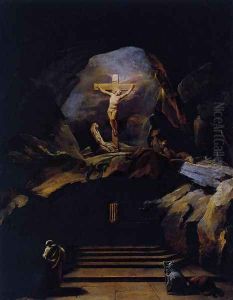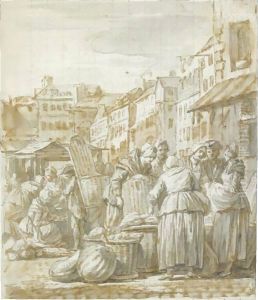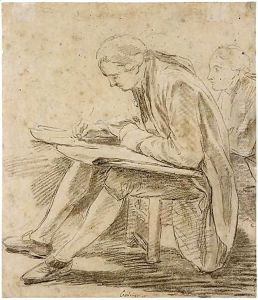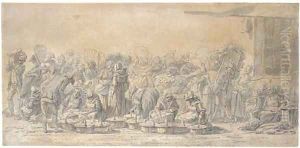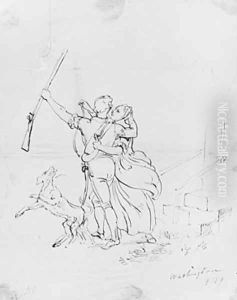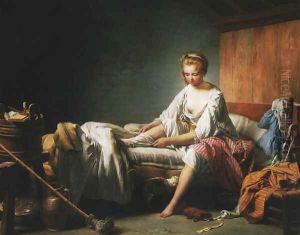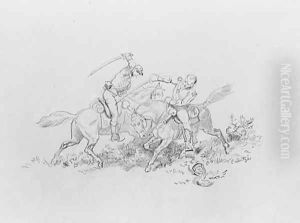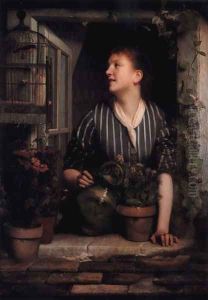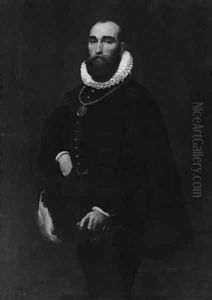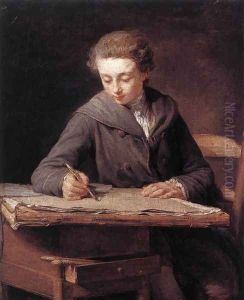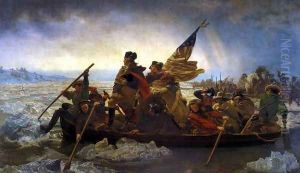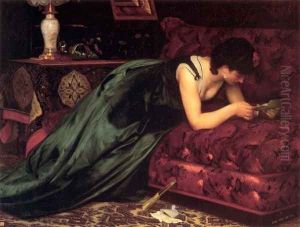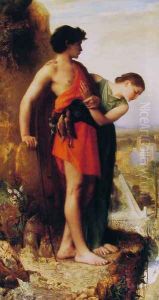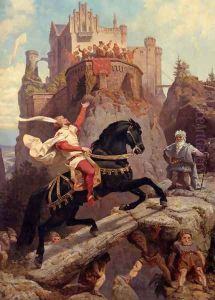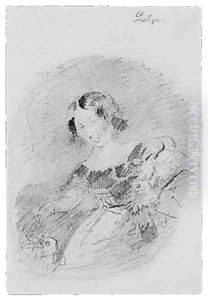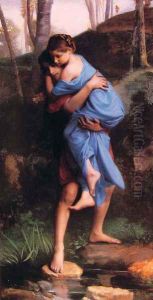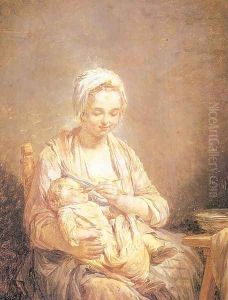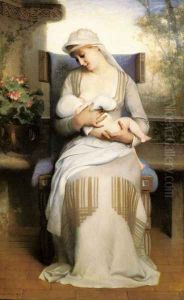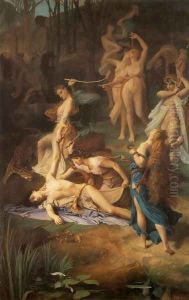Nicolas-Bernard Lepicier Paintings
Nicolas-Bernard Lépicié was a French painter born on June 16, 1735, in Paris, France. Despite not being as widely recognized as some of his contemporaries, Lépicié made significant contributions to the art world during the 18th century. He was the son of two engravers, Bernard Lépicié and Renée-Élisabeth Marlié, which provided him with an environment steeped in artistic tradition from an early age. His parents' influence likely played a crucial role in his early artistic development.
Lépicié initially trained under the tutelage of Carle van Loo, who was a prominent French painter of the period. Under van Loo's guidance, Lépicié honed his skills and developed a keen eye for detail, which would become a hallmark of his work. His early works were heavily influenced by the Rococo style, which was prevalent at the time, characterized by ornate and decorative art that emphasized grace and gentle action.
Throughout his career, Lépicié's work evolved to exhibit a greater sense of naturalism and attention to detail. This shift in style was partly due to the influence of the Enlightenment and the growing demand for a more realistic portrayal of subjects in art. He became known for his genre scenes, portraits, and historical paintings. One of his most famous works is 'Blanchisseuse' (The Laundress), which is celebrated for its meticulous detail and the lifelike representation of its subject.
Nicolas-Bernard Lépicié was also an accomplished portraitist, and his works in this genre are notable for their psychological depth and the realistic portrayal of his sitters. He painted several portraits of notable individuals of his time, which were well received for their sophistication and verisimilitude.
In addition to his painting, Lépicié also held the position of professor at the Royal Academy of Painting and Sculpture in Paris. His role as an educator allowed him to influence a generation of young artists and contribute to the French art scene beyond his own works. Lépicié was a respected member of the Academy and was involved in many of its activities and exhibitions.
Tragically, Lépicié's life was cut short when he died on September 15, 1784, in Paris. Despite his relatively brief career, his works have left an enduring mark on the history of French art. His commitment to naturalism and the humanization of his subjects can be seen as a precursor to the later developments in French painting, particularly the rise of realism and the works of artists like Gustave Courbet.
